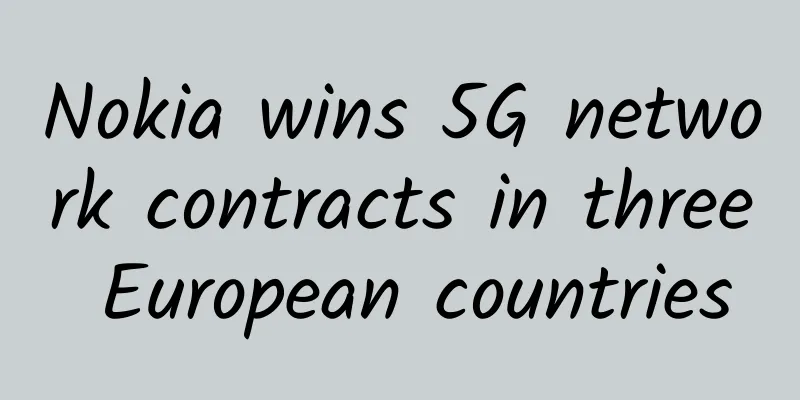5G Era Series: Battle of Big Companies

|
Nearly two years have passed since the issuance of 5G licenses. How will 5G change our lives and the world? Can 5G's technological innovation be transformed into application scenarios and present commercial value? Practitioners in the ICT industry have been working hard to explore. In the era of personal digitalization, the biggest ones are king From analog mobile phones to high-speed mobile data communication networks, mobile communications have undergone four generations of development and evolution from 1G to 4G. Telecom operators build "public mobile communication networks" mainly to provide services to individual customers. Driven by 4G, the biggest winners of the digital development wave are mobile Internet companies. With the help of capital, some of these highly innovative companies have grown into world-class companies, and some have become leaders in certain fields, enjoying unparalleled success. Whether it is a telecom operator or a mobile Internet company, the winners at this stage are all large enterprises, or in other words, the larger the enterprise, the stronger its competitiveness. This is because personal digitalization has two interesting industrial characteristics: The first is the network effect, which means that as the number of users in the network increases, all users are likely to gain greater value from the expansion of the network size, so the overall value of the network grows at a higher rate. Another feature is that the cost of replicating information products is very low. Therefore, even if the cost of innovation is high and the risk is great, as long as good products can be made, successfully replicated on a large scale, and have a large number of customers, the company's innovation and operating costs can be diluted to the maximum extent, thereby obtaining rich returns. Because of these industry characteristics, telecom operators and mobile Internet companies that provide information services to individual customers both take expansion as their primary goal. Compared with localized telecom operators, mobile Internet companies can carry out global integrated operations based on unified technical standards and open architecture, and their growth rate will reach a new level. However, few people realize that these industrial laws and characteristics are only available to individuals through digitalization. The digital capabilities that enterprises need cannot be met by standardized products. The magic of network effects is no longer there, products cannot be replicated at low cost, and previous successful experiences have become invalid. 【5G opens a new era of digitalization】 During the two sessions, former Finance Minister Lou Jiwei once again expounded on the view that "5G is immature", speaking for many people who are not optimistic about the development of 5G. People who hold this view generally believe that telecom operators need to invest huge resources to build 5G public mobile communication networks, but it is difficult for them to achieve new revenue in the individual customer market. In fact, the dilemma faced by telecom operators in 5G is also the current pain point of mobile Internet companies: the rapidly developing mobile Internet companies have already touched the ceiling of the personal digital market, and investment in this field is unlikely to continue to bring growth, so they must find new growth points. From a technical perspective, 5G's high bandwidth, low latency, and massive IoT are designed primarily for enterprise digitalization. Therefore, relying on the development of 5G to seek growth space in the enterprise digitalization market has become a common goal pursued by ICT industry practitioners. Mobile communications have developed rapidly over the past few decades, largely due to industrial division of labor and cooperation: (1) Equipment manufacturers conduct R&D and production of communication equipment and products based on international standards and technological innovations; (2) Equipment manufacturers sell communication equipment and products to telecom operators, who then take the lead in network construction, form mobile communication capabilities with wide-area coverage, and promote them to a large number of customers; (3) Mobile Internet companies develop products and services that meet the information consumption needs of individual customers and promote them to a large number of customers; (4) Individual consumers enjoy a new life in the mobile Internet era based on the communication networks provided by telecom operators and the information services provided by mobile Internet companies. We see that in the era of personal digitalization, equipment manufacturers, telecom operators, and mobile Internet companies have clear boundaries with each other, and everyone works together to create industrial space and share industrial dividends. But in the era of enterprise digitalization, this pattern has undergone a qualitative change. From the demand side, corporate customers often want personalized, end-to-end overall digital solutions. If we continue to use the serial operation of the industrial chain, not only will the cycle be long, but the ability to respond to personalized needs will be poor, making it difficult to meet the requirements of corporate customers. From the supply side, companies have a desire to grow and in the absence of new market space, they will have the desire to penetrate upstream and downstream of the industrial chain; especially when they see that partners in the industrial chain cannot meet their needs, they will have the urge to replace them. 【Big companies are fighting in the same area】 Players who previously benefited from the rapid development of mobile communications are now not surprised by 5G and the digitalization opportunities it brings to enterprises, but are now full of anxiety. The lack of traditional market space, the failure of traditional development models, the pursuit of growth by enterprises and their advantages in resources are driving the industry ecosystem to change quietly. For telecom operators, the individual customer market is not only saturated, but also faces homogeneous competition. Seeking customer growth in the stock market can only rely on fierce price wars. The increase in costs and uncertainty in revenue may not necessarily bring growth to the company. Therefore, in order to grow, telecom operators seek to increase revenue by opening up new sources, developing "cloud services", and providing "cloud-network integration" infrastructure for corporate customers; on the other hand, they seek to save costs and take advantage of the "ITization of CT technology" to seek suppliers other than traditional equipment manufacturers to reduce the cost of networking and operations. Equipment manufacturers are seeing telecom operators cutting back on investment in wide-area coverage, so they need to seek new channels for business expansion. On the one hand, equipment manufacturers bypass telecom operators and directly provide network element products and even network services to enterprise customers; On the other hand, equipment manufacturers provide cloud services and even enterprise-level solutions to corporate customers. Although these measures may cause dissatisfaction among telecom operators, since equipment manufacturers now have a strong voice in the industry chain, the sentiment of telecom operators has not hindered equipment manufacturers from breaking through. For Internet companies, they have been preparing for the expansion of the enterprise digital market for several years, especially focusing on technological innovation and industrial layout around cloud computing. Today, facing the enterprise digital industry opportunities brought by 5G, Internet companies are leaders in terms of both professional capabilities and market influence. However, the connectivity provided by a large-scale, overall optimal public communications network may not be the locally optimal infrastructure, and may not even be able to meet the basic needs of applications. When Internet companies look down from the perspective of applications and cloud, traditional standardized communication networks will show weaknesses such as high cost, inflexibility, and poor openness. Therefore, Internet companies can rely on strong IT capabilities and combine new technologies in the ICT field to build their own digital information acquisition, conversion, connection and transmission networking capabilities that meet cloud needs. 【Summarize】 Large-scale enterprises are suitable for businesses with high degree of productization and scalable replication. Therefore, large cross-domain platforms are the stage and battlefield for large enterprises. In the 5G era, although huge industrial opportunities have emerged for enterprise digitalization, it is very difficult to replicate products because enterprises need personalized and differentiated end-to-end solutions, and there are not many cross-domain common capabilities that can be formed. Therefore, whether it is telecom operators, equipment manufacturers or Internet companies, they are all exploring their own growth space around infrastructure platforms. Telecom operators extend their communication networks based on mature standards to the cloud, forming a cloud-network integrated infrastructure; Equipment manufacturers try to provide cloud services, integrate operators' networks or build private networks for customers, and create cloud-network integrated ICT infrastructure for enterprise customers; Internet companies rely on their advantages in cloud computing and their understanding of applications to build a more flexible, open and low-cost digital connection network, which is the infrastructure of cloud-network integration. It is not difficult to see that the value space of infrastructure in the entire industry is limited, and with so many large companies in this limited space, the intensity of competition can be imagined. In the next article, I will analyze the gains and losses of ecological construction in the struggle for industry discourse power by large companies, and share my research and observations on the 5G industry ecology. |
<<: Computer software: Recommend 10 practical office efficiency tools
>>: 2021CHINC, to be continued! New products, new solutions, new values, we are different!
Recommend
Fearing that 5G deployment will affect aviation safety! US aviation agencies and telecommunications agencies are in dispute
Although 5G (fifth-generation mobile communicatio...
TmhHost: 388 yuan/year KVM-2 cores, 4G memory, 40G disk, 1.5TB traffic, Los Angeles CN2 GIA/AS9929/Japan Softbank optional
This month, TmhHost continues to offer special an...
Simple test of BandwagonHost special price annual VPS (Softbank, Osaka, Japan)
Didn't I buy a VPS with annual payment from B...
HostKvm: 30% off Hong Kong VPS, 4.9/month KVM-1G memory/10G hard disk/50M bandwidth
HostKvm is a foreign VPS service provider founded...
5G development has reached a critical turning point
"5G currently covers all county towns and ur...
When Private LTE Is Better Than Wi-Fi
While cellular technology is often thought of as ...
Wi-Fi 6E has been launched. What is the difference between it and ordinary Wi-Fi?
On September 2 last year, ROG released a high-end...
In the DT era, what is the trend of data center cabling?
As enterprises realize that structured cabling is...
Foreign media: As of June, South Korea's 5G users have exceeded 16 million
On August 11, according to foreign media reports,...
Enterprise Servers, Storage, and Networking: The Building Blocks of Modern IT Infrastructure
A strong and efficient IT infrastructure is essen...
PacificRack Chinese Valentine's Day discount: $13.14/year KVM-2GB/60GB/1TB/Los Angeles data center
PacificRack, referred to as PR, is a site under Q...
2017 F5 makes applications fly!
[51CTO.com original article] In 2017, what will y...
With the arrival of 5G, will enterprise-level networks disappear?
Reader Question: Although I am also in the IT ind...
From DoH to ODoH, operators can no longer hijack DNS
Not long ago, 360, which has always held high the...
5 blockchain trends for 2018
Few new technologies have generated as much discu...









